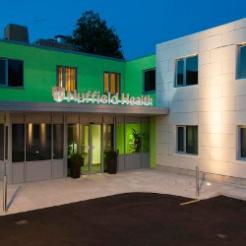A sharp increase in the volume of work carried out for the NHS helped Nuffield Health, the UK’s highest-earning charity, to an income boost of 12 per cent during 2012, taking its total revenues to £645m.
According to its annual report and accounts for the 2012 calendar year, income rose in all three of Nuffield’s main divisions. Its 31 hospitals saw their takings rise by 9 per cent to £462m, providing 70 per cent of income overall, thanks largely to more work coming its way from the NHS. The charity also invested £29m in improving and expanding its hospital facilities during the year.
Further development is taking place this year. According to the report, planning permission had already been secured for a new hospital in Cambridge; the new Bristol hospital was due to be completed and Brighton was to finish its refurbishment. Upgrading of Wessex and Brentwood hospitals would also continue.
Nuffield hospitals treated nearly 98,000 patients on behalf of the NHS during the year.
The consumer fitness and wellbeing division recorded revenue growth of £33.5m to £133m, and membership growth of 56,000 people, up over 40 per cent – though much of this was due to the acquisition of Greens Health & Fitness.
Corporate fitness and wellbeing also grew its turnover, by £3m to £67.7m.
Robust finances
The charity annual report states that the charity’s “robust” financial state is demonstrated by three key figures: “Underlying earnings have increased by 21 per cent over the past two years. Over the same period, the charity has ploughed around £115m into capital expenditure – more than half of which has been spent on expanding and developing the services we provide – yet in that time our net debt has increased by only £14m.”
Some 19 per cent of Nuffield’s income came from products and services that were free to the patient or customer at the point of delivery and a further 13 per cent came from products and services that cost customers less than £1 a day.
In the charity’s latest survey of over 30,000 hospital patients, 98 per cent rated their care as excellent or good.
Pay for trustees and staff
The charity closed the year with a surplus of £4.1m. This was after paying its chairman £49,999, its deputy chair and committee chairs £35,000, and each trustee £28,000 for their services. They did not receive any uplift in pay because the remuneration committee decided it would be “inappropriate” to award one given the ongoing pay freeze for public servants.
The highest-paid staff member, usually the chief executive, earned £840,000-£850,000 for his year’s work, though this was one band lower than in 2011. The number of staff earning over £60,000 increased from 164 in 2011 to 191, and those earning over £200,000 rose from ten to 13.
The charity said that the total compensation for its senior executives, including base salary, annual bonus and pension contribution, is set at 75 per cent of the market median for executives at FTSE 250 companies.
'Looks and feels' like a private healthcare company
Recently Nuffield came under attack from the US for its charitable status. American healthcare company HCA said Nuffield had an unfair advantage in the marketplace because it doesn’t pay tax on profits, despite looking and behaving exactly like a private-sector outfit.
At the time, Nuffield defended itself by saying that everything it does is designed to improve people’s health – “unlike for-profit organisations who exist solely to provide a return to their shareholders”.









